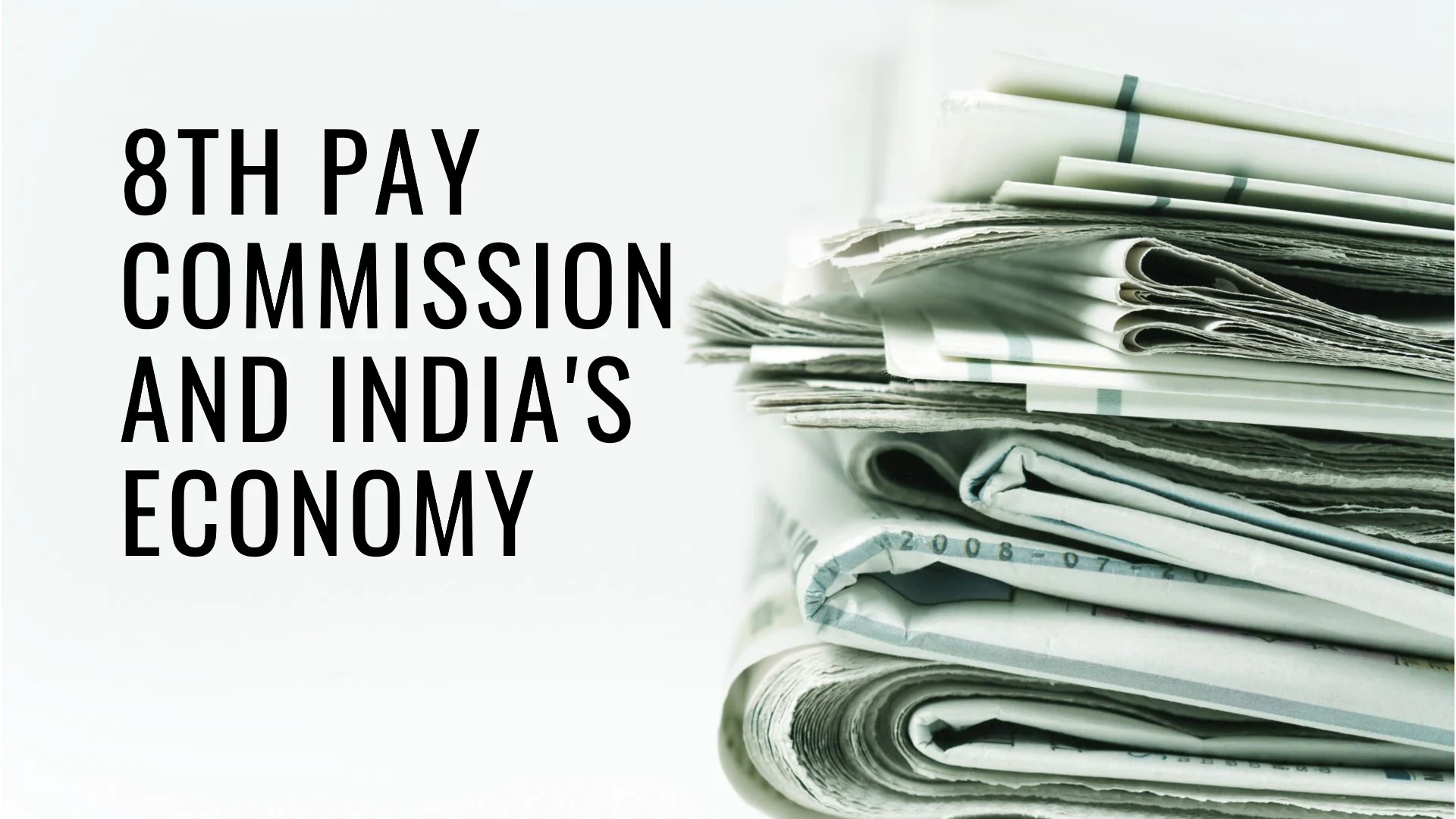The 8th Pay Commission launched by the Indian government emerged during a crucial economic period for the nation. Given current inflation rates and world market instabilities together with the essential requirement for economic recovery this initiative might serve as a key factor in increasing consumption levels and stimulating growth. The following section details the commission’s outcome and its targeted parties together with their effects on India’s economic condition.
Table of Contents
A Bold Step Towards Economic Revival
By creating the 8th Pay Commission the government maintains a dual focus on employee support and increased economic expansion ahead of all considerations related to fiscal prudence. This economic move emerges as an attempt to drive forward the Indian economy by improving consumer confidence alongside stimulating domestic spending during a global financial crisis and increasing debt levels.
The Indian economy has experienced protection from global financial shocks because Pay Commission announcements during favorable times are combined with employment guarantee programs. Through pay and pension adjustments from the 8th Pay Commission, the government intends to put more funds into staff hands who can use these funds for private spending. Private sector investment shows reluctance after the pandemic therefore this step becomes crucial.
What Are Pay Commissions and Their Legacy?
The statutory body known as the Pay Commission performs duties to evaluate the compensation structure which determines salaries for all public sector workers. The foundation of the first Pay Commission occurred in 1946 right before independent India established a mechanism to manage fair employee wages and standardized allowances for central government workers.
Significant changes have been introduced by successive commissions throughout their operating years.
- The 6th Pay Commission in 2006 eliminated significant pay differences between civil servants and those working in private organizations.
- The 7th Pay Commission issued two main changes by recommending basic pay increments up to 14.29% and implementing the pay matrix system. The inquiry process concerning the 8th Pay Commission is anticipated to mitigate existing worries especially found within the Armed Forces.
Who Benefits from the 8th Pay Commission?
The 8th Pay Commission recommendations will mainly affect three groups of receivers:
- Central Government Employees: Civil servants, employees in public sector undertakings, and defense personnel.
- Pensioners: The pensioner category includes both family pensioners and retired employees of the government who total approximately 1.4 million active employees and 1.9 million pensioners working in the defense sector.
The commission demonstrates its commitment to population changes by implementing new leave policies that offer both family care benefits to all genders and specific childcare options for mothers. The government implements these changes to achieve equal welfare benefits while managing their financial repercussions.
Why DA and Increments Are Not Enough
The wages of Dearness Allowance (DA) and annual increments support inflation adjustments yet they lack effectiveness to address long-term economic problems. The 8th Pay Commission has developed extensive reforms that will include:
- The wage structure should adopt current market requirements by replacing outdated payment methods.
- The implementation of policies needs to focus on managing issues that develop from artificial intelligence technology and worldwide pay differences.
- Competitive compensation along with retainment measures should be implemented to maintain leading professionals within the country.
These reforms will sustain economic recovery while developing a balanced compensation system for government workers.
State Government bodies function together with Pay Commissions by employing combined modification strategies
State authorities usually accept Central Pay Commission recommendations with numerous modifications. For instance:
- The 6th Pay Commission in 2006 eliminated significant pay differences between civil servants and those working in private organizations.
- The 7th Pay Commission issued two main changes by recommending basic pay increments up to 14.29% and implementing the pay matrix system. The inquiry process concerning the 8th Pay Commission is anticipated to mitigate existing worries especially found within the Armed Forces.
Why DA and Increments Are Not Enough
The wages of Dearness Allowance (DA) and annual increments support inflation adjustments yet they lack effectiveness to address long-term economic problems. The 8th Pay Commission has developed extensive reforms that will include:
- The wage structure should adopt current market requirements by replacing outdated payment methods.
- The implementation of policies needs to focus on managing issues that develop from artificial intelligence technology and worldwide pay differences.
- Competitive compensation along with retainment measures should be implemented to maintain leading professionals within the country.
- These reforms will sustain economic recovery while developing a balanced compensation system for government workers.
Why the 8th Pay Commission Is More Than Just a Salary Hike
As a fundamental change, the 8th Pay Commission sets the path for enhancing India’s economic systems through its salary scale modifications. The 8th Pay Commission’s commitment to solving economic problems in labor markets fiscal challenges and worker welfare standards can transform India into a stronger economic system.
FAQs on the 8th Pay Commission
- Q. What constitutes the 8th Pay Commission along with its specific importance to the nation?
A. The 8th Pay Commission functions as a government organization dedicated to updating salary programs for central government staff members together with pension recipients. Highlights of the 8th Pay Commission include its ability to speed up economic growth together with its ability to improve employee welfare and resolve core problems found within labor markets. - Q. The 8th Pay Commission works as a catalyst for what factors related to economic growth
A. Through increased salary and pension distributions, the commission plans to stimulate purchasing power and improve household spending ability and interest investment from private markets for long-term economic stability. - Q. The main beneficiaries of the 8th Pay Commission proposals will be central civil service staff along with defense personnel and retirement and family pension groups.
A. The central government staff along with workers within the defense sector and pensioners and their family pensioners form the main groups who receive the commission’s suggested adjustments. - Q. State governments adopt modifications of recommendations established by the Central Pay Commission.
A. The recommendations of Central Public Services Commissions often get modified when state governments implement them through independent pay commissions designed to address localized issues. - Q. The 8th Pay Commission will deal with which upcoming challenges of pay and salaries?
A. The commission will dedicate its attention to fighting inflation as well and it will work on modernizing pay structures while implementing retention strategies for talent and addressing artificial intelligence and worldwide economic disparity challenges.




